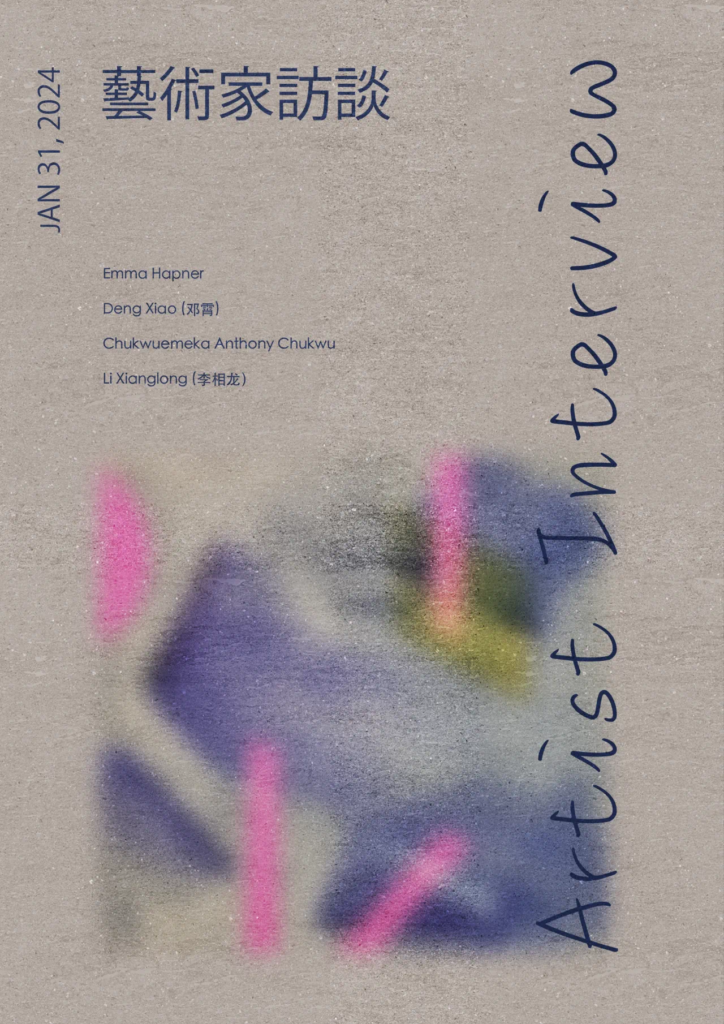Art, Ego and the World, Artists Interview by VillageOneArt
March 7 , 2024
Author by: Yining Fang
In this vast melting pot of multiculturalism, art in the contemporary context is far more complex than in the last few centuries. Hans Beltings argued that global art “indicates the loss of context or focus, and includes its contradiction by implying the counter movement of regionalism and tribalization, whether national, cultural or religious.” However, it is worth asking that rather than saying art today is independent of context, can we consider it as a product of mediation between cross-cultural communication? It is based on artists’ original backgrounds but altered in various guises through observing and interacting with the globalized world.
This time, in New York, VillageOneArt has had the privilege of collaborating with young artists from diverse backgrounds. This collaboration is not only about showcasing their works but also delving deep into their unique perspectives on identity and artistic creation in this culturally intersecting space. This article will explore the reflections and creative inspirations of these artists as reflected in interviews.

Emma Hapner
Emma Hapner received her Master of Fine Arts with a concentration in painting from the New York Academy of Art. She is originally from Indiana and received her Bachelor of Fine Arts from Ball State University. She works primarily in oil paint on canvas to create figurative works from a female perspective.
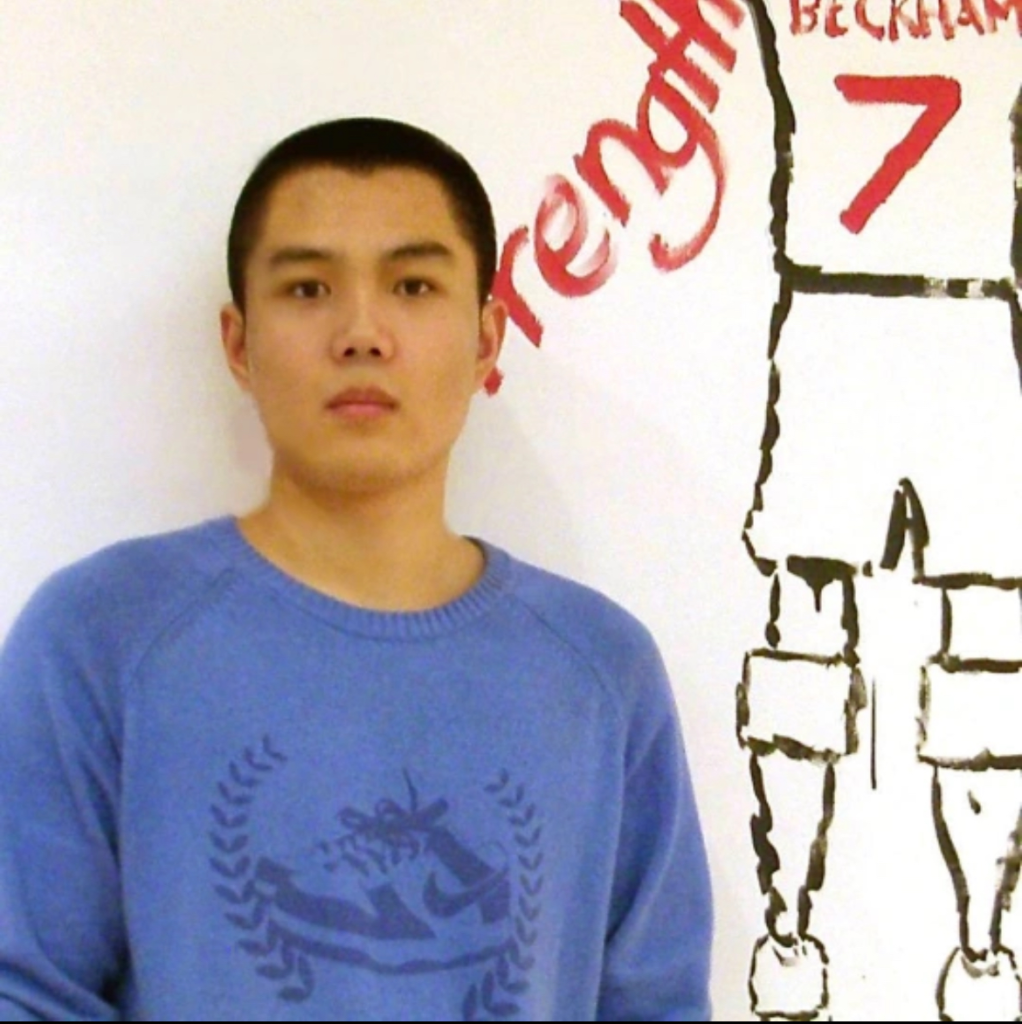
Deng Xiao
Deng Xiao’s works blend the artistic styles of neoclassicism and surrealism, combining different artistic styles in the paintings to create new meanings and creativity. This fusion allows for the interplay of traditional and modern, objective and irrational elements. It can challenge traditional notions, break the boundaries of art, and create captivating and thought-provoking works.
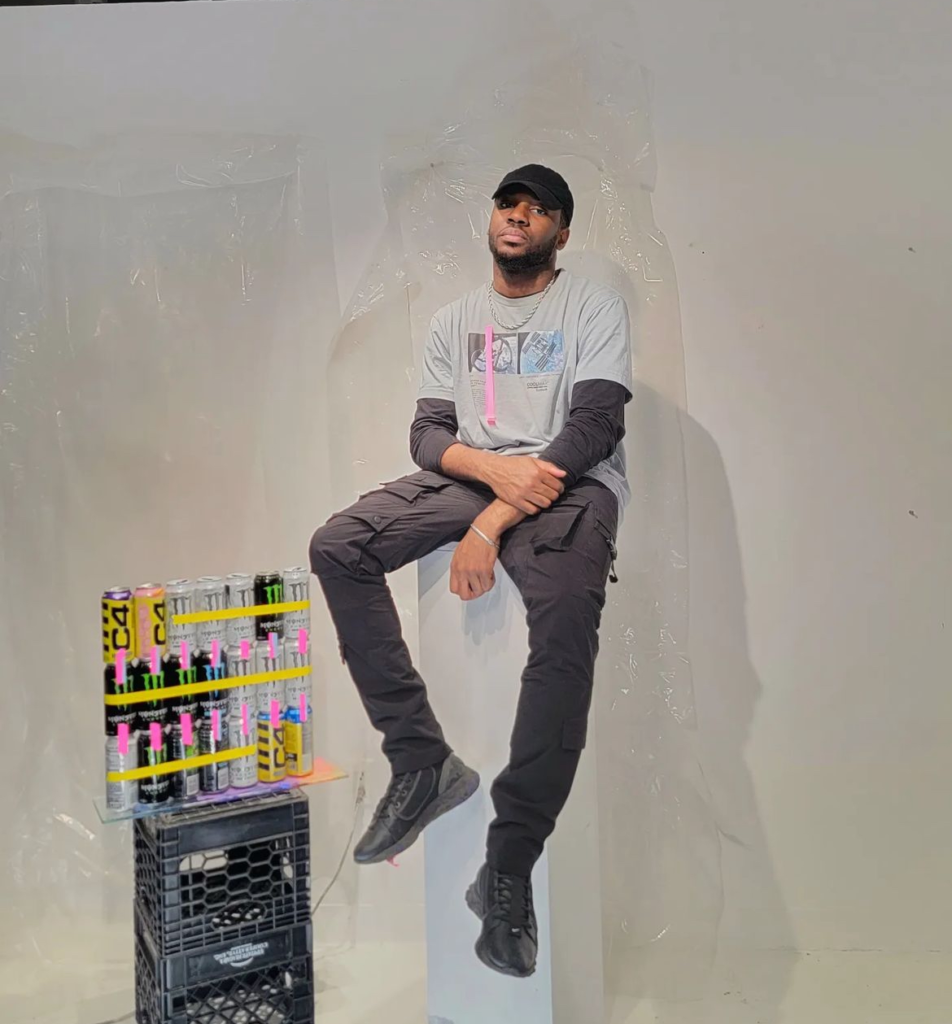
Chukwuemeka Anthony Chukwu
Chukwuemeka Anthony Chukwu continuously bridges disciplines from his upbringing, and critical interests in gaming, technology, culture, and Architecture. He primarily Paints and makes a selective addition of complimentary media like tapes, and collage with moments of them applied to 3d elements, at times, does a bit of storytelling of mini experiences.

Li Xianglong
Li Xianglong’s work remixes material from pop culture, internet imagery, philosophical texts, and 3D models; devising and reformulating explorations of ruins, social events, and everyday life. The artist’s language of painting is rife with morbid jokes, cultural mistranslations, and mockery of a burnt-out society, thus revealing the fragmented morality behind racism and office abuse.
We spoke with these artists from multicultural backgrounds about their motivation for being an artist and about their creation context of how inspirations, personal experiences, and memories entwined together.
1. Can you tell us about your background as an artist? How did you get started, and what inspired you to pursue art?
Emma Hapner
I’ve loved art and aspired to be an artist for as long as I can remember. One of my first memories was using one of those step-by-step drawing books to draw a picture of a ballerina. I also loved drawing Disney princesses when I was little; I remember loving the beautiful designs, the bright colors, and their pretty outfits. I started getting more serious about art in high school. During my Junior year, I was the only person in my art class (I went to a really small school) and was given a lot of creative freedom. That was when I decided to major in art in college and pursue my BFA at Ball State University. The professors there are incredible and they really supported me and pushed me to learn more and achieve my goals. One of my professors there recommended that I apply to the New York Academy of Art, and I ended up moving to NYC in 2020 to get my MFA there.
Deng Xiao
When I was in art school, the curriculum only focused on the training of skills, such as the long-term “Oil Painting Human Anatomy” course, which required students to spend up to 7 weeks painting models in detail. Compared to the dull course training in school, I prefer creating things that interest me. I believe by creating and painting what you want to paint, you can also hone the painting basics; and as your painting skills improve, the works you create will get better and better as well.
Chukwuemeka Anthony Chukwu
I have always had an interest in drawing and painting in textbooks as a child and got into tons of trouble for it. I guess early questioning of what it meant for me forced me to evolve my approach to art at a rapid rate. I played a lot of video games and watched a lot of cartoons growing up and it has come to manifest in my work with loud or subtle themes of excitement and thrill.
I started pursuing a career in arts right after pursuing a first degree in Architecture. It had always been back and forth on what brand of creativity I wanted to employ. I fell in love with architecture at the early stages of the program because of how it was applied with function to spaces and people then quickly realized I could tackle the same things as a painter. Uniquely engaging spaces rather than only having people experience painting as a singular entity or information.
Li Xianglong
I was born in a third-tier industrial city in China during the 1990s. Like many young people, I grew up watching animation and Hong Kong gangster movies. Today, my life is immersed in the street culture of Brooklyn, and social media, with its abundance of fragmented information, dark humor, memes, and emojis, shapes the way people communicate and perceive reality. Through my art, I describe everything, including how I live, how I play, and how I work.
2. What are some works that you’re particularly proud of? Why and what inspired the piece?
Emma Hapner
A recent work that I’m very proud of is “Girl’s Best Friend” and it’s a painting of me in a sparkly red cowgirl outfit on a pink horse. The painting is very large and was challenging for me, because I haven’t painted animals very much, and it was more complex than some of my other pieces. It was inspired by the painting “Napoleon Crossing the Alps” by Jacques-Louis David. I loved the idea of taking this iconic, triumphant image and placing myself in the scene instead. I like that it feels like an exuberant celebration of femininity and womanhood. The pink horse in my painting has hair clips, gems, and beads in its main and tail that were inspired by things I would wear as a little girl, and the cowgirl outfit is bright red and covered in glitter, gems, and tassels. I loved working on such a large painting because I felt like I could add in tons of little fun details.
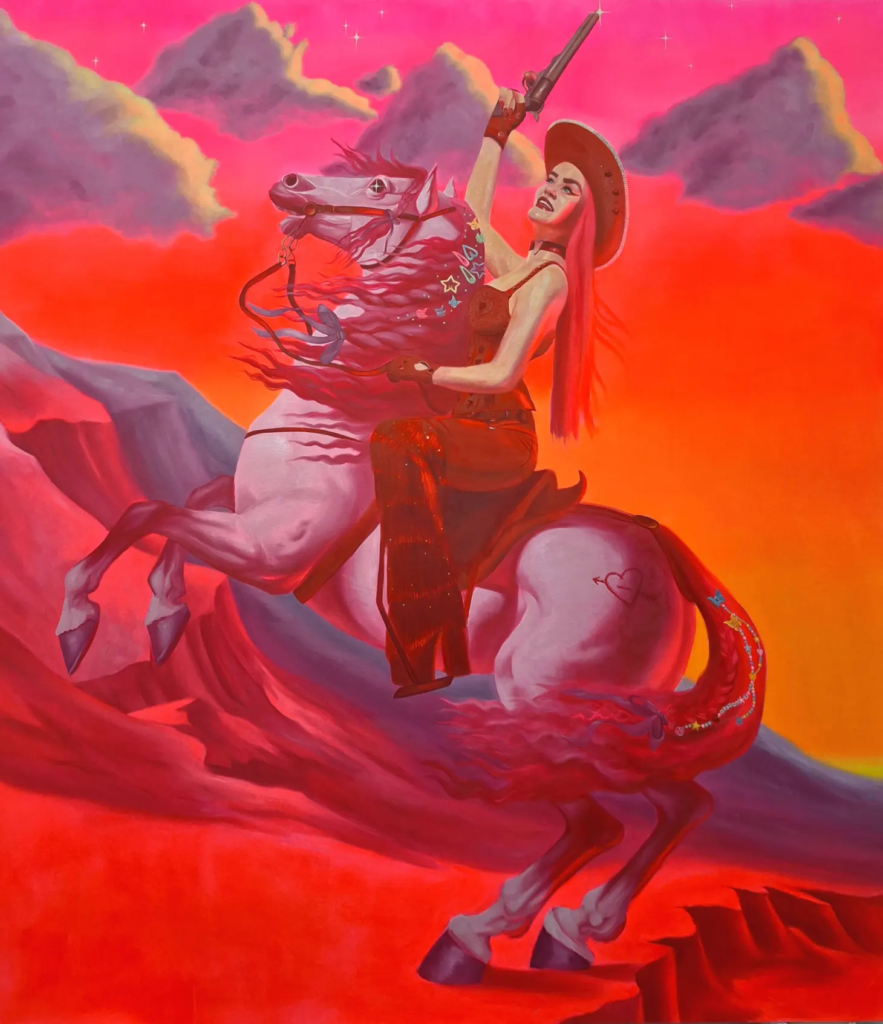

Deng Xiao
Contemporary artists’ works are more like conducting research on a topic within a system, each work is a part of the system. This is why to understand an artist, one needs to look at all the works in a certain series, not the best pieces, or a favorite one.

Chukwuemeka Anthony Chukwu
I’m particularly proud of ‘Tactical Potato’. It’s a piece that communicates my familiarity with gaming and energetic color. I feel I could simply show this piece off to give people the gist of why I paint. I’m equally proud of my ‘painting fragments’. These small pieces act as extracted information instead of sketches from the larger more ambitious work and present the precious little moments that occur with more significance. The interplay between tapes and underpainting. The layers of gels and paints to line work.

Li Xianglong
I often depict the people around me and the experiences I’ve been through through paintings, but I present them in a cinematic, gaming, animated style, and atmosphere. For instance, the artwork “Atlantic City”. It portrays an incident where my friends and I were in a car accident during a road trip. However, I’ve depicted the characters, actions, and even the setting in a manner reminiscent of a scene from a Hollywood movie. By placing the flames in the lower part of the image, the car accident also becomes a pivotal moment in the film.
Life is more interesting than art; I enjoy seeking unexpected thrills from life.
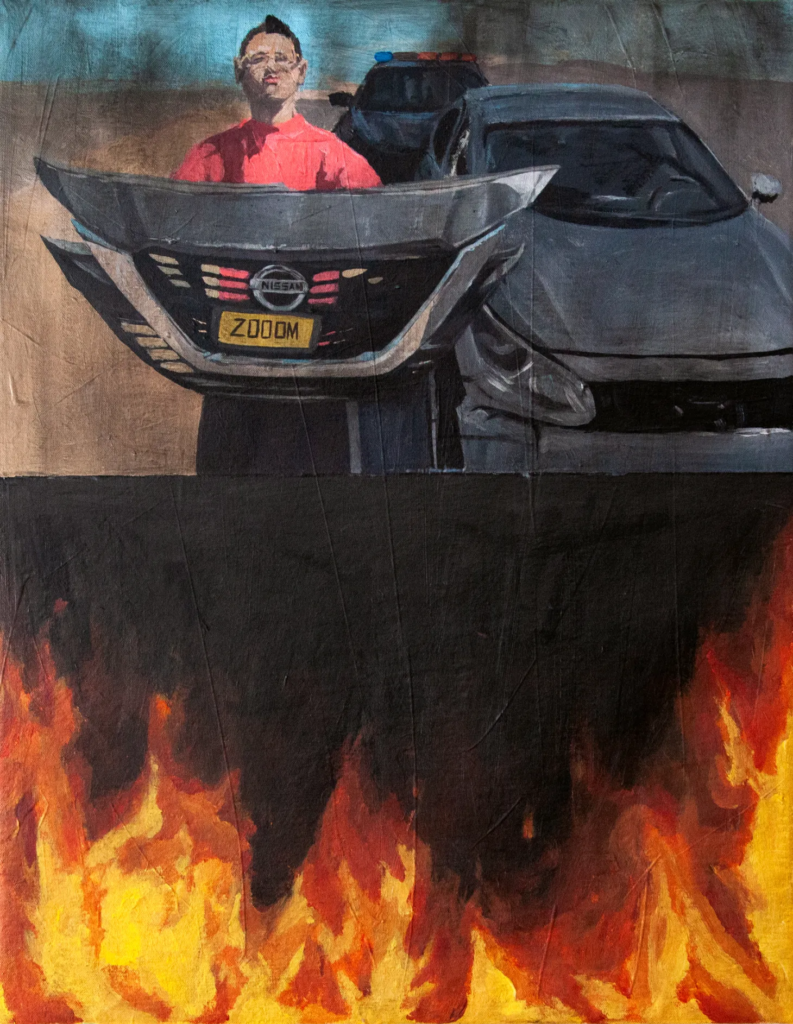
3. What is your creative process from conceptualization to the finished product?
Emma Hapner
Usually, my ideas begin with inspiration from a painting I really like in art history, then I try to analyze what I like so much about it and think about how I can recreate it. Then, I take reference photos of myself, sometimes combining multiple photos into a collage digitally. After that, I do some drawings either in my sketchbook or directly on the canvas where I always start on a pink background… Once I am satisfied with the composition, I do an underpainting using washes of quinacridone red. I let that dry, and then I begin painting in the skin tones first before moving to the rest of the painting.
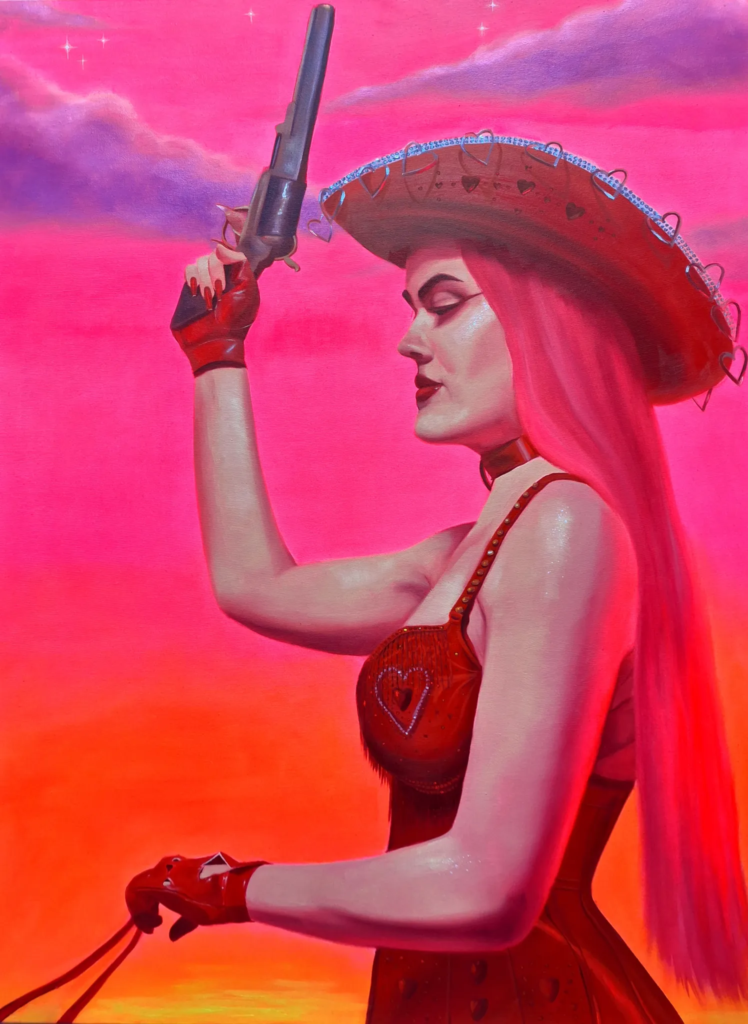
Deng Xiao
I will pre-set a systematic framework, and language patterns, and freely add imagination and various topics to the scope. Topics include religion, social issues, historical stories, and more. Then I’ll make a picture, put it aside, and change it occasionally. After a month or two, look at the picture again, and if I still like it, I’ll draw it.

Li Xianglong
Apart from collecting stories while traveling, I’m also addicted to social media apps like Instagram. I capture many interesting photos every day, and these abundant images serve as both material and inspiration for creating “absurd stories” in my artwork.

4. How do you approach a new project or idea?
Emma Hapner
Usually when I have a new idea that I am really excited about, I move very quickly. I try to harness that excitement and the urgency to create and get the ball rolling as soon as possible. I rarely struggle to come up with ideas, I struggle to get all of my ideas out; so it’s important to me to work fast. Then, when I have one idea that I’ve turned into a painting, ideas for a whole body of work will start to branch out from there.
Deng Xiao
I’ll divide new projects and ideas into two categories: incremental and radical. The former needs to be prioritized, while the latter needs to be examined to determine its feasibility.
Li Xianglong
Continuously experiencing new hobbies and life, making friends with people from different industries, and seeking out new and touching stories. Life will teach me how to approach the next artistic project.
5. How does your cultural background/identity influence your artistic perspective and creative process?
Emma Hapner
I think that my upbringing really inspired my artistic perspective. I’m inspired by my mom. I remember her decorating her house when I was little, painting walls pink, and surrounding us with beautiful things. I have three sisters, and we are a very girly family. We were always having tea parties, dressing up, and baking. I always loved having a place to embrace that girliness. My mom is also a very strong and driven person; she started her own business, and she worked her way up to a leadership position at the college where she works, all while pursuing her PhD. Seeing her become a strong leader and working so hard, while simultaneously embracing her own femininity was extremely impactful and inspiring.
Deng Xiao
For today’s young generation, it’s hard to say what can express their identity and cultural background. Everyone is integrated within a diverse system.
Li Xianglong
Living in New York, I often experience alienation, being trapped, and uncertainty about the future. Life suddenly seems fractured; I know that something is wrong with the world, but I struggle to find the words to express it, or I’m unwilling to speak, and perhaps, I’ve even forgotten how to speak. So, I started adopting a nonchalant and worldly attitude on social media, using humor and memes to brush off these emotions. Therefore, the playfulness and even absurdity in my artwork aren’t necessarily a form of criticism; they might be a way of examining and reflecting. It’s a kind of “negative positivity” where I seek refuge within it, ultimately leading to resolution and release.
In the unique cultural environment of New York, these artists express their distinct perceptions of the environment and the soul through art. We enter the artists’ perspectives and lives through words, while their artworks constantly convey emotions and thoughts beyond the confines of language.
About VillageOneArt
Founded in 2018, VillageOneArt Gallery is a women-led contemporary art space in the neighborhood of Chelsea, NYC, showcasing works from local and international artists of diverse backgrounds. The gallery’s foundational principles are established upon exploring the infinite bounds of human imagination through expansive and innovative mediums.
VillageOneArt Gallery serves as a necessary bridge between art and the public sphere, with a soul reflecting the evolving spirit of our era. Each exhibition sparks a temporal and cultural dialogue, inviting rich reflection and thought-provoking perspectives.
(text & photo courtesy of VillageOneArt Gallery)
Source From: LI TANG

